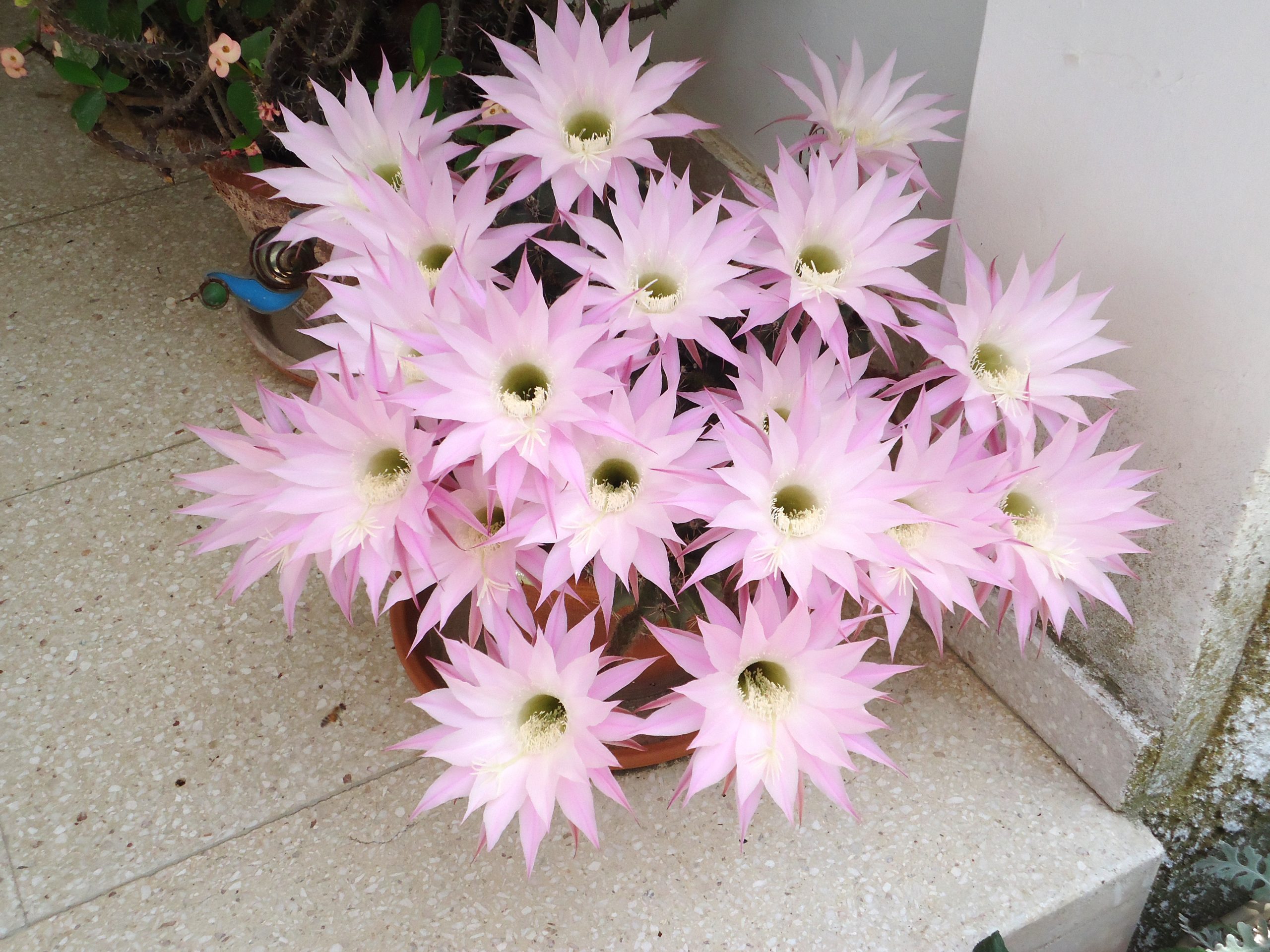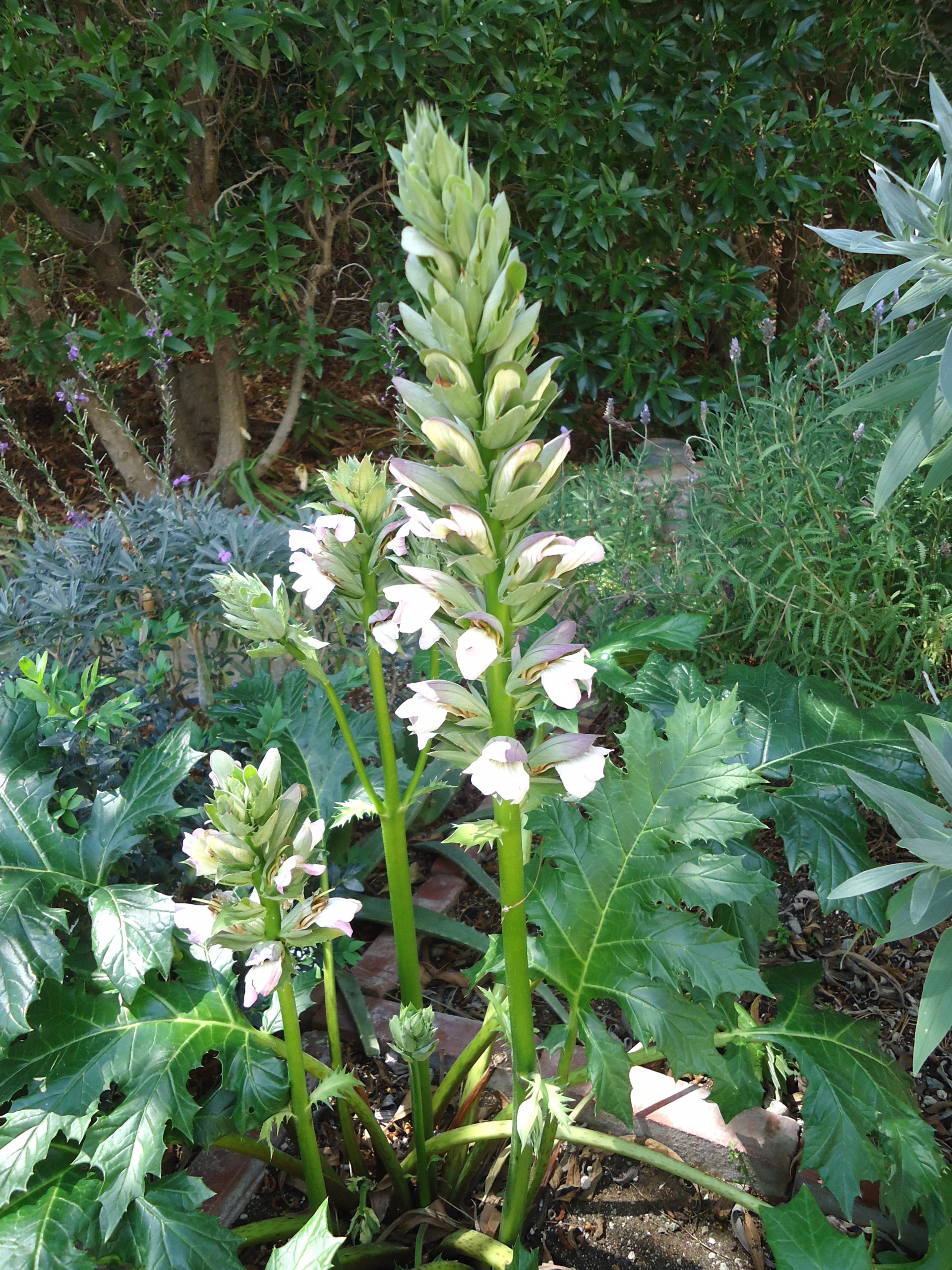Gardening can be a lonesome hobby, even more so whilst everyone was on lockdown. Spring is the most exciting time in the garden here, as plants throw out new shoots and flower buds begin to burst open! Whilst those in northern Europe were still suffering late winter weather, here in Cyprus growth was fast and some plants quickly reached their potential! This year there was no-one to share this excitement with, apart from my husband, who doesn’t get the same thrill each spring that I do. Gardening clubs were also shut down, so there was no one to pass on cuttings and advice to. I also missed giving a lecture I was to give on how gardening began in Cyprus, which I had been looking forward to immensely. Even my monthly membership magazine from the Royal Horticultural Society, of which I have been a member for nearly 40 years, sent out the May edition online. Great stuff, but there is always a downside, as I usually pass on the magazine to other gardening friends!
Gardeners tend to be far-sighted people, always looking to the next season and the future, which is why the loss of so many plants in the UK and around the world due to the shutdown of garden centres was such a devastating blow to the many growers. For many years I was involved in shows in the Central Belt of Scotland, where professional growers might be rivals for the customers, but there was a lot of camaradie and joshing going on amongst them all. If you were short of a particular plant for your display and it was a long way to go home and get another one, someone in the marquee would always lend you something from amongst their back-up plants. The loss of so many flower shows acrosss the UK and the rest of the world meant that there were no flowering gems for the customers to see and plant in their own gardens. At one time in Cyprus we used to have flower shows in the state fairgrounds, where local growers could display their best plants, but that seems to have fallen by the wayside too.
Lots of people enjoy having a drive out to look at pretty gardens or garden centres, and perhaps enjoy a cup of tea and a sticky bun at the same time. It also helps people to see what can be grown at the correct time of year. I am not knocking garden centres, but it is a well-known fact that plants have to be in flower to attract customers to buy them, so as they are displayed in forced conditions they tend to be way ahead of those in the actual garden! We used to open our garden both in Scotland and here for different charities with great success. One afternoon we had 500 people in our Scottish riverside garden. Here, we didn’t quite manage so many visitors, but raised several thousands of euros for local charities.
So how do you share your successes with everyone nowadays? Facebook has been just the way to be able to do that, and so during this strange gardening year, I posted different plants in season and showed them off weekly on social media! Many garden centres did just that, as well as growers, and I did enjoy seeing the Dutch bulb fields in full colour on my screen. Not quite like wandering around the lovely Keukenhof gardens, but a good substitute. Hopefully when this dreadful virus has abated, we will be able to enjoy looking at gardens again, but it may be a little while before we can do that.

WHAT TO DO IN THE GARDEN THIS MONTH
The sudden heatwave in the middle of May brought a quick end to the many annual plants that we can only grow in our short spring. Their roots are so close to the surface of the soil that they quickly burn and demise. There is always a bonus though and you can collect the seeds remembering to write their names on the envelope and then sow them later in the autumn. It’s no wonder that some of the staples in our gardens are cacti and succulents that also thrive on verandas or in courtyards here. If you are from northern Europe you would probably have seen them cosseted on windowsills or even in heated and double-glazed greenhouses dedicated to them all year round, keeping out the worst of the weather there.
At the moment pink or white flowers of Echinopsis, a South American cactus, are in bloom but each flower lasts only one day. Look around and you will find whole gardens dedicated to these wonderful plants surviving all but the coldest of weather outside. Maybe it is because the weather here closely mirrors the conditions under which they grow in their native habitats in some parts of South Africa, Arizona or California.
To be a succulent, a plant must have evolved ways to conserve water in its leaves, stems or roots and let it out as and when the plant needs it, and if you grow succulents you will agree that this happens here in Cyprus during our very hot summers. Aeoniums are a good example of that. In wintertime they have plump fleshy, sometimes almost black leaves, from which huge flower heads, looking like golden broccoli, appear on long stems in the very early spring. During the summer they draw on their own stored water and by October they are looking very parched and hanging their heads.
Unsightly banks and walls can be covered in the South African succulents Carpobrotus edulis or the smaller leaved aptenia, whose pretty tiny red flowers attract visiting bees. Carpobrotus also goes by the name of the ‘Hottentot Fig’ and known here as ‘Aphrodite’s Tresses’. You can see the reason why that name, as the ‘leaves’ look like layers of waved hair as the stems pour down a bank or wall. Many cacti and succulents are covered in very fine hairs that are the very devil to get out of clothes or skin, but not all them have prickles and some are very smooth indeed.
The current craze for minimalism in gardens surrounding very modern houses, make cacti and succulents very suitable plants for people with little time for gardening. Agave americana ‘Variegata’ with their curving stems creating much enclosed space, make very bold statements as they sit amongst gravel or pebbles. Yuccas, soaring skywards and sometimes many branched, give height to gardens and reward you with long lasting flowers as well.
Species irises will have finished flowering by now, although hybrid irises tend to last a little longer. For both irises the treatment is the same. Irises need to be dug up, cleaned and replanted every two or three years. Pull off any dying leaves from along the rhizome exposing it to the sun, and replant the rhizome facing into the sun, which will bake it to form new flowers. However, this may delay flowering for a season. Cutting down the other stems will also help expose the rhizome. The recommended feeding is bone meal but I have found that a rose feed twice year is a good substitute.
Hanging baskets, crammed full of petunias and pelargoniums, will also need feeding regularly, so use ‘Phostrogen’ or ‘One’ in water every two weeks to keep them going. Keep the centre of the plants free from overcrowding, as that just encourages botrytis and scale insects that can make such a mess of plants. At the first signs of any of the tell-tale little white pests, spray if you can, although you may have to destroy the plant and scrub the pot if the infestation is too great.

Plant of the Month Acanthus mollis
This very striking architectural plant with handsome glossy-lobed foliage is a must in any big garden, as it does need space, growing in some areas to between one to one-and-a-half metres and almost as wide. Commonly known as ‘Bear’s Breeches’, this clump forming perennial will appear every year once it has become established and is native to the Mediterranean area, being one of the earliest cultivated species. It can also grow well in the wild – in dry areas, roadsides and wastelands – being tolerant of drought and shade and certainly does well in gardens up to around 300 metres elevation.
The flowers appear in tall, cylindrical spikes, with up to 120 white blooms enhanced with light pink bracts (modified leaves). They encircle the stem in late spring and early summer and are much sought after by bees. The handsome leaves, replicas of which you may find carved in marble atop Greek columns, are also very attractive to slugs and snails, which may chew them to death when the first fresh foliage appears. Plants may also be susceptible to powdery mildew.
Propagation is by tubers from the mother plant or by seeds.
Patricia Jordan


